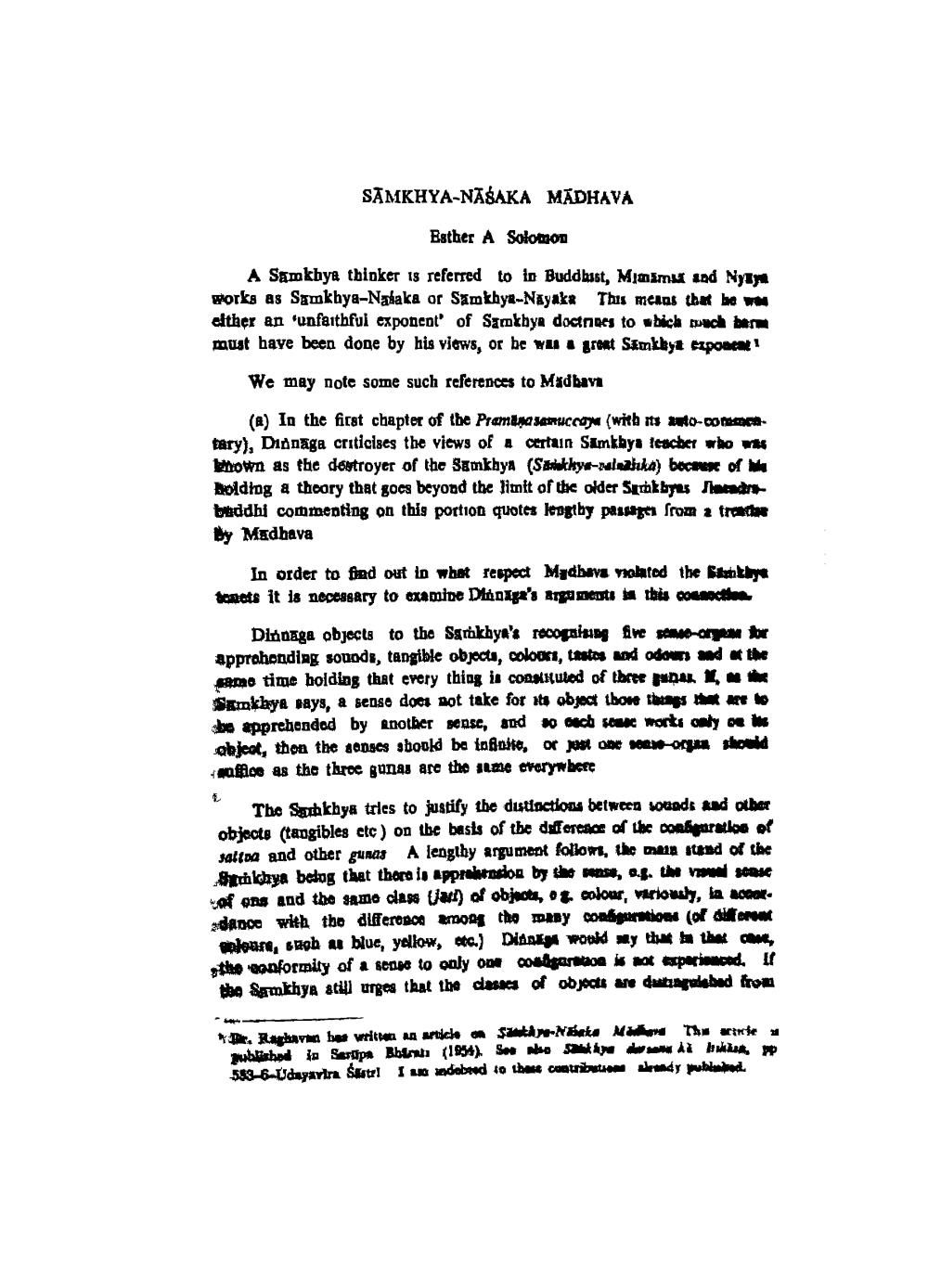________________
SAMKHYA-NASAKA MADHAVA
Esther A Solomon
A Samkbya thinker is referred to in Buddhast, Mimimax and Nyy works as Samkhya-Ngiaka or Samkhya-Nayaka This means that he was either an 'unfaithful exponent of Samkhya doctrines to which such berm must have been done by his views, or he was a great Samkhya exponent
We may note some such references to Madhava
(a) In the first chapter of the Pramana samuccaya (with its auto-conamentary), Dianaga criticises the views of a certain Samkbys teacher who was hown as the destroyer of the Samkhya (Sakhya-alaiska) because of his holding a theory that goes beyond the limit of the older Sarkbyns Jinendrebaddhi commenting on this portion quotes lengthy passages from a treatise By Madhava
In order to find out in what respect Madhava violated the Bänkys temets it is necessary to examine Dinnaga's arguments in this connection.
Dinanga objects to the Sarkhya's recognising five sense-organ for apprehending sounds, tangible objects, colours, tastes and odours and at the same time holding that every thing is constituted of three guna. 1, the Samkhya says, a sense does not take for its object those things that are to be apprehended by another sense, and so each sease works only on its abject, then the senses should be infinite, or just one sense-organ should office as the three gunas are the same everywhere
The Sukhya tries to justify the dutinctions between sounds and other objects (tangibles etc) on the basis of the difference of the configuration of sattoa and other gunas A lengthy argument follows, the main stand of the Shkchya belog that there is approbrasion by the sense, ag. the vowel souse of ons and the same class (ja) of objects, og. colour, variously, in accor dance with the difference among the many configurations (of different loure, such as blue, yellow, etc.) Dings would say that he that ce, the conformity of a sense to only one configuration is not experienced. If the Samkhya still urges that the classes of objects are dustingalabed from
B. Raghavan has written an article on Sathya-Nabaka Made The acce published in Sertips Bhimi (1954). See also Shikka 553-6-Udayavira Sastr! I na andebeed to these contribution aleancy puldanded.




